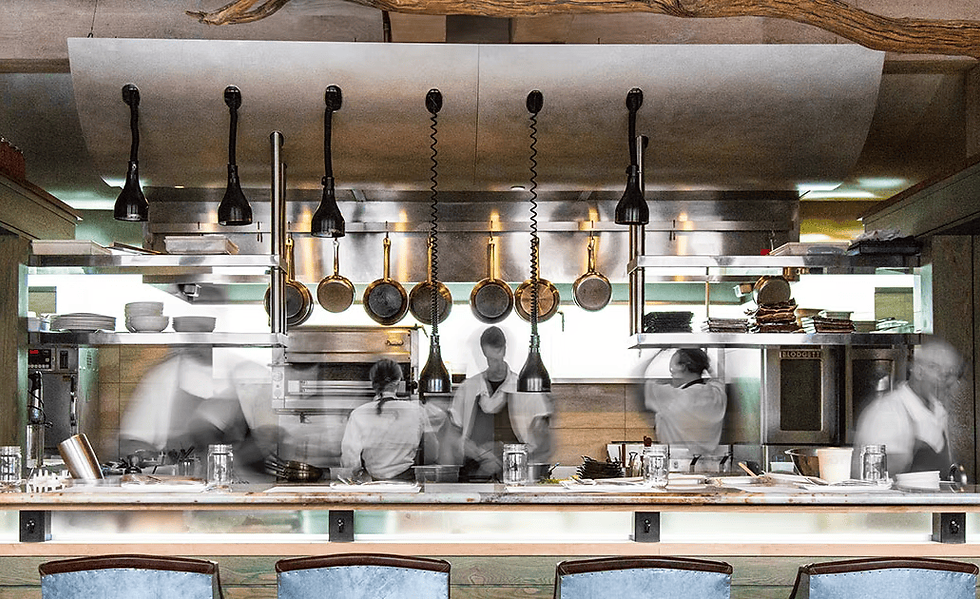Restaurant Design Trends to Watch in 2026
- brad2281
- 2 days ago
- 3 min read
The restaurant industry is evolving rapidly, embracing technology, sustainability, and customer-focused experiences. As owners and chefs redefine what it means to deliver exceptional dining atmospheres, design has become as important as the menu itself. From smart layouts to modular spaces and eco-friendly interiors, 2026 is shaping up to be a year where form and function work together seamlessly.

Outdoor Dining Becomes a Permanent Design Element
The shift toward outdoor dining, which began during the pandemic, has now become a long-term design feature. Restaurants are investing in permanent outdoor extensions that match the aesthetics and comfort of indoor spaces. Expect all-weather patios with retractable roofs, advanced HVAC zoning, heated flooring for year-round comfort, and biophilic touches such as plants, stone, and wood finishes. Modern diners seek connection to the outdoors, and restaurant owners are responding by making exterior spaces an integral part of the guest experience.
Shared and Hybrid Kitchen Models Rise
Rising operational costs have driven food entrepreneurs to adopt shared commercial kitchens and hybrid setups. These collaborative environments allow multiple brands to share resources while maintaining unique concepts. Hybrid kitchens combine dine-in service with delivery-only brands under the same roof, maximizing efficiency and revenue. This model is both cost-effective and sustainable, especially for startups and expanding restaurant groups.
Smarter Kitchens Through Real-Time Collaboration
Next-generation kitchen design focuses on real-time collaboration powered by digital tools. Platforms like ChefVue™ by LaBel Foodservice allow owners, architects, and chefs to co-create designs online. Operators can view 3D visualizations, adjust layouts for prep flow, service zones, and equipment placement instantly, and receive accurate floor plans and specs in days instead of weeks. This chef-led approach reduces errors, improves workflow, and accelerates project completion, becoming essential for restaurant builds in 2026.
Interiors That Prioritize Comfort and Connection
In 2026, restaurant design emphasizes comfort, community, and sensory balance. Guests now prefer spaces that feel warm and authentic rather than flashy. Trending interior elements include natural materials like wood, linen, and terracotta, acoustic ceiling panels to minimize noise, warm adjustable lighting, and neutral palettes accented with greenery or textured art. These cues foster mindfulness and connection, encouraging diners to relax and engage.
Technology-Integrated Dining Spaces
Digital integration is now expected in modern restaurant designs. Examples include smart ordering kiosks, tableside QR menus, IoT-connected kitchens that track energy and inventory, and automated climate and lighting systems. Technology-driven design enhances efficiency, sustainability, and the overall dining experience.

Flexible Seating and Modular Layouts
Flexibility is a major focus in 2026 design. Operators are choosing modular furniture systems that adapt to small gatherings or large groups. Features include movable tables and partitions, stackable chairs, and convertible bar-height and dining tables. This adaptability ensures operational agility for private events, social trends, or evolving customer preferences.
Sustainability at the Core of Every Design
Sustainability is now a baseline expectation. Restaurant owners prioritize eco-conscious materials, energy-efficient appliances, and water-saving fixtures. Projects often include LED lighting, reclaimed furniture, locally sourced materials, and integrated waste-reduction zones with composting systems. Eco-friendly design supports brand image, reduces costs, and strengthens long-term operational sustainability.
Designing Smarter for the Future of Dining
Successful restaurant design in 2026 focuses on adaptive, efficient, and meaningful spaces. From outdoor dining expansions to digital collaboration platforms like ChefVue™ by LaBel Foodservice, innovation is driving the next wave of hospitality design. Working with professional design experts ensures spaces meet the highest standards of efficiency, compliance, and guest appeal, allowing operators to plan and build restaurants with precision, creativity, and confidence.




Comments